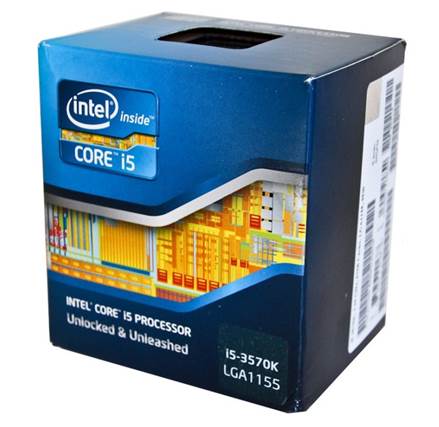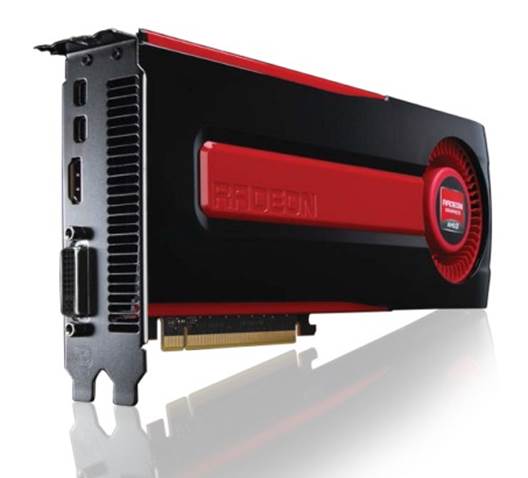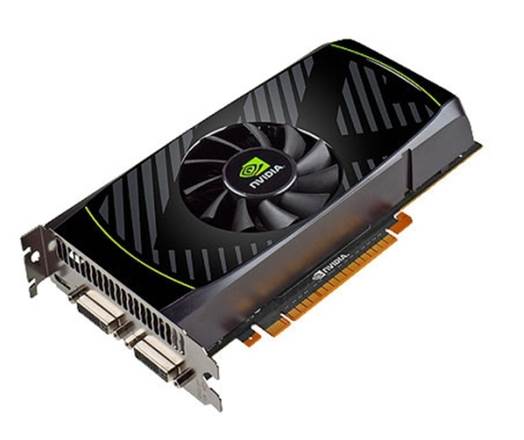Intel Socket 1155 Chips
Whether you’re buying new or upgrading an
old system, you’re likely to be looking for an Intel Socket 1155 chip. That’s because
both the last generation Sandy Bridge and current generation Ivy Bridge platforms
use the same, mutually compatible socket.
In absolute terms, Intel CPUs invariably
perform far better than AMD’s for the same money, especially in real-world
situations like gaming. The multi-core design of AMD chips mean benchmarks
results often look higher than they are, because benchmarks can use more than
four cores together in ways that ‘real’ software doesn’t. If you’re building a
high-end system, you should automatically disregard AMD chips because even the
best can’t really compete with Intel’s Core i5 and Core i7 lines, whether Sandy
or Ivy Bridge.

The
i5 3570K, an overclocker’s dream
At the high-end of the market, Intel’s Core
i7 line is fairly evenly matched for value. The Core i7-3770K, Core i7-3770 and
i7-2700K are priced at $401, $377 and $361 respectively, and the decline in
performance is indexed almost exactly to their prices.
Personally, we’d immediately disregard the
i7-3770, because its locked multiplier means you won’t be able to overclock it,
and the prodigious overclocking capabilities of Intel’s K chips are what really
sell the Sandy & Ivy Bridge lines. The question is then up to you as to
whether you’d rather have an Ivy Bridge chip or a Sandy Bridge chip. If you
don’t have an Ivy Bridge motherboard, go for the i7-2700K. If you do, get the
i7-3770K.
However, it’s the mid-range of the market
is where the real bargains can be had. When you look at Intel’s Core i5 line,
creative overclocking and cooling can elicit performances equivalent to the
levels of the best Core i7’s, so there’s even more reason to spend your money
on them.
The best i5 on the market at the moment,
the Core i5-3570K ($280) isn’t especially good or bad value - but it has real
potential. If you’re not planning to overclock, then its close competitor, the
Core i5-3550 ($248) is the second best i5 on price and value as well as
performance. However, neither it, nor the best value i5 chip out-of the box (the
i5-3470, at $232) are overclockable, which severely impacts their desirability
for those hoping to get excellent performance at low prices. Interestingly, the
multiplier-unlocked Sandy Bridge i5s, such as the i5-2550k and i5-2500k, are
both more expensive at retail than the competing Ivy Bridge chips, because
their architecture means they run slightly cooler and are more desirable to
overclockers.
With these factors taken into account, we’d
advise bargain-hunters to go for the i5-3570K. While it’s the most expensive in
absolute terms, and ‘only’ middle of the road in terms of retail value, with a
decent cooler you can overclock it to extremes that are so much fun, the price
hardly matters. The caveat we’d offer is that if you’re not the sort of person
who likes to stretch your hardware, buy an i5-3470 instead not only is it the
best value Intel CPU out of the box (from any line), but it performs well
against all of the other i5 chips except the i5-3570K (which outperforms them
all).
And finally, if you’re looking for a
lower-end chip, you’ll obviously want to try out a Core i3, and in that case
the best options are either an i3-3220 ($152) or an i3-2120 ($141). Both 3.3GHz
CPUs are substantially better performing than the i3 chips around them, and
there’s very little between them. At this price level, you’re not going to be
doing huge amounts of gaming with either chip, so we’re tempted to recommend
the cheaper Core i3-2120 outright – but the fact that the i3-3220 is an Ivy
Bridge chip with Intel HD Graphics 2500 (compared to the i3-2120’s Intel HD
Graphics 2000) means that it just about edges the latter out with its slightly
superior graphics capabilities, which matter a lot in low-end systems that
don’t have their own graphics cards.
FINAL RECOMMENDATIONS:
High-End: Intel Core i7-3770K (or Intel
Core i7-2700K)
Low-End: Intel Core i3-3220
Overall: Intel Core i5-3570K
Graphics Cards
If you’re a gamer, the one thing in a
computer which matters more than the CPU is the graphics card. While desktop
and workstation users can get away with the onboard graphics provided by modern
processors, if you want a game to look good, you have to use a dedicated card.
Even a low-end one will result in huge visual improvements and, if you already
have a reasonably fast CPU, then a new graphics card is the most affordable way
to up your framerates.

AMD
Radeon HD 7970 graphics card
Although the graphics cards market can
superficially be divided up into AMD’s Radeon line and Nvidia’s GeForce line,
this doesn’t strike us as particularly helpful -after all, unlike the CPU
market, there’s no huge division between the performance and pricing of AMD and
Nvidia graphics cards and no real barriers to buying either, other than
ill-advised loyalty. Instead, we’ve sub-divided them by price bracket and,
rather than make this a game about raw specs, we’ve once again used the results
available from PassMark. We’ve settled on what we believe is a clear of how a
graphics card is performing: dividing the PassMark score by the price to give
us a rating for how good value each card was for its power. By comparing that
number to those generated by rivals that retail within the same price bands; we
can once again see which peripheral gets you the most power for the least
money.
Sub-$160 Graphics Cards
Although this position was hotly-challenged
by the Radeon HD 7770, the eventual winner was the GeForce GTX 650 (1GB
version) which can be picked up for as little as $138, a decent chunk cheaper
than the Radeon’s $152.
The two cards aren’t hugely dissimilar:
they’re both latest generation models at the lower-end of their range, both
contain 28nm chips, and both use 1GB of RAM. However, while the Radeon HD 7770
was very slightly better value in terms of its benchmark results, the cheaper
absolute price of the GeForce GTX 650, considered alongside its slightly lower
power consumption and its support for OpenGL 4.3 makes it the one we’d
recommend for people shopping at this level.

GeForce
GTX 650 graphics card
In all fairness, many of these benefits
only exist because the card is some six months newer than its Radeon-based
rival but they also mean it has a longer life ahead of it, another factor that
ultimately makes it the better choice.
FINAL RECOMMENDATION: GeForce GTX 650
$160-$319 Graphics Cards
This time there were three cards vying for
the position of best value, all priced between $240 and $289. The Radeon HD
7870 ($289) is one of the company’s top cards, and the one with the highest
benchmark score in PassMark’s listings. It’s also the most expensive. Like its
rivals, it has 2GB of RAM, and uses the latest generation technology. The problem
is, it’s really trying to compete with those a level above this price point,
and that means AMD has sacrificed much of the card’s value for a performance
increase.

AMD
Radeon HD 7850
The slightly cheaper Radeon HD 7850 ($240)
turned out to be better value than its 7000-series sibling, despite poorer
performance overall. It also edged out the GeForce GTX 660 (the non-Ti version)
which, at $272, performed better, but sacrificed a little more value to do so.
If you can find a GeForce 660 for less than $260, it’d be a clear, easy choice
– we couldn’t, unfortunately.
FINAL RECOMMENDATION: Radeon HD 7850